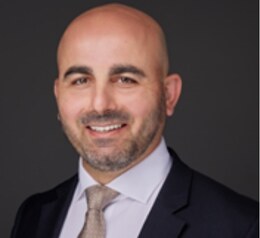9th Edition
World Heart Congress
THEME: "Heartbeat of Change: Inspiring Solutions for Global Cardiac Health"
 17-18 Nov 2025
17-18 Nov 2025  Dubai, UAE (Collaboration with the Armenian Cardiologists Association)
Dubai, UAE (Collaboration with the Armenian Cardiologists Association) THEME: "Heartbeat of Change: Inspiring Solutions for Global Cardiac Health"
 17-18 Nov 2025
17-18 Nov 2025  Dubai, UAE (Collaboration with the Armenian Cardiologists Association)
Dubai, UAE (Collaboration with the Armenian Cardiologists Association) 
Rutgers University, United States
Title: Outcome of Implantable Cardioverter Defibrillator in Cardiac Sarcoidosis
Halawa is a cardiac electrophysiologist at Robert Wood Johnson University Hospital, specializing in the diagnosis and treatment of complex cardiac arrhythmias. He is skilled in performing electrophysiology studies, catheter ablation for both atrial and ventricular arrhythmias, and the implantation of cardiac devices, including implantable cardioverter-defibrillators (ICDs), cardiac resynchronization therapy (CRT) devices, and leadless pacemakers.
Halawa earned his medical degree from the University of Aleppo Faculty of Medicine. He completed his residency and fellowship training in cardiovascular disease at the University of Missouri-Columbia, followed by advanced fellowship training in clinical cardiac electrophysiology at Harvard Medical School and Brigham and Women’s Hospital.
Deeply committed to advancing the field, Halawa is actively involved in research and has published extensively on various aspects of cardiac arrhythmias. Prior to his current role, he served as an assistant professor of medicine at both Creighton University School of Medicine and the Mayo Clinic.
He is a member of the Heart Rhythm Society and the American College of Cardiology and has been an invited speaker at numerous national medical conferences.
Purpose: Cardiac sarcoidosis is a multisystem inflammatory disorder characterized by ventricular arrhythmias. Implantable Cardioverter Defibrillator (ICD) is used to prevent sudden cardiac death.
Methods: We performed literature search for studies that addressed the outcome and complications of ICD in Cardiac Sarcoidosis (CS). Multiple search sites were reviewed from January 1st, 2000 until December 1st, 2018. We then performed a meta-analysis using a random effects model. Two investigators independently extracted the data and assessed studies’ quality.
Results: Ten studies with 585 patients qualified for the analysis. In the pooled analysis, 57% were male with mean left ventricular ejection fraction (LVEF) of 38.4%. Appropriate and inappropriate ICD treatments (AT and IAT) were reported in 39% and 15% of patients respectively over mean follow up period of 25 months and mortality rate of 8%. A sub-analysis of four studies indicated that patients with appropriate therapy did not differ from the rest of CS population in LVEF% [mean difference (MD)= -7.37%, 95% confidence interval (CI): -16.89 to 2.15, p=0.12], age [MD = -3.87 years, 95% CI: -10.19 to 2.46, p=0.23], primary prevention [range difference (RD) = -0.11, 95% CI: -0.31 to 0.10, p=0.31] or secondary prevention indication [RD= 0.09, 95% CI: -0.12 to 0.3, p=0.37]. High degree AV block was more common in patients with AT [RD= 0.07, 95% CI: 0.00 to 0.14 p=0.05].
Conclusion: ICD placement in CS is associated with high incidence of both appropriate and inappropriate therapy. High degree AV block appears to be predictive of appropriate ICD therapy.